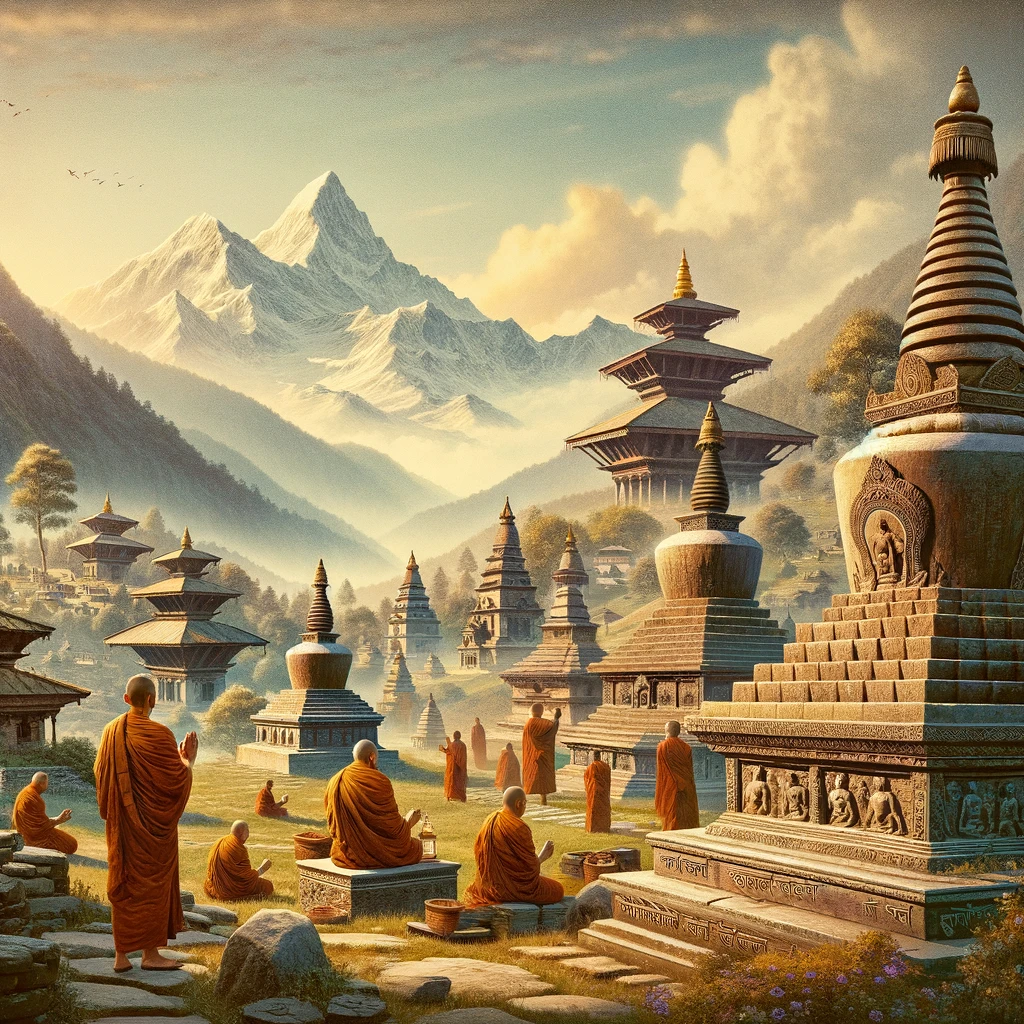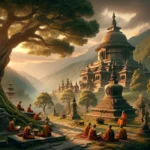In the Buddhist history of Nepal too, the Asokan period is very important. Emperor Asoka was the first person to inscribe and erect stone pillars which are important to the history of Buddhism. Three Asokan pillars were found (four pieces) in present-day Nepalese territory. Among them, two have inscriptions. The pillar inscription in Lumbini reads as follows:
“Because Buddha, the sakya sage, was born here, the Beloved of the gods, King Priyadarsin, (when) crowned twenty years, himself came and worshipped (here), (and) a stone made railing was caused to be built (here by him), and a stone-pillar was erected. Because the Blessed One was born here, the Lumbini village is made tree of taxes, and paying an eighth share (of the product)”.
The inscription of Lumbini was admired by pilgrims and copied as momentous and kept sakes for a long period. Hany Flak discusses two such kinds of spurious Asokan records. The other Asokan pillar with an inscription was found near Niglisagara, Kapilavastu District of Nepal. It gives evidence of a Buddhist belief that there are predecessor Buddhas. The inscription reads as follows:
“The Beloved of the gods, King Priyadarsin, (when) crowned fourteen years, enlarged the Stupa of Buddha Kanakamuni (Konagamana) to double (its former size), and (when) crowned (twenty) years, himself came (here), worshipped, (and a stone-pillar) was erected.”
Sir John Marshall and Alfred Foucher have discovered substantial evidence on Emperor Asoka’s Cultural Messengers. The gist of which is as follows: A few casket inscriptions are found on stupa II at Sanchi (Sonari Stupa). It relates names of the Sapurisa or saint Kasapagota, Majhima, Haritiputa, Mahavanaya, Apagira, Kodiniputa (Kosikiputa), Kosikiputa, Gotiputa, Mogaliputa and Vachiya-Suvijayita Of these the first and the last names were appeared in the inscription found on the stone box in which those caskets were contained. The first three names are inscribed in a single casket. The Vachiya-Suvijayita appears on the second; the Kodiniputa, Mahavanaya and Apagira appear on the third. The remaining names are appear on the fourth.
The saints(Sapurisa) Kasapagota, Majhima Kosikiputa and Gotiputa appear on the Sonari caskets while those of Gotiputa, Haritiputa and Mogaliputa occurred on the three other caskets from Andher.
The Dudubhisara is identified with Dundubhisara mentioned in the Dipavamsa (VIII 10) as one of the five cultural messengers sent by the Venerable Tissa to the Himalayan country after the conclusion of the Third Council in the reign of Asoka. The four other cultural messengers were Mulakadeva, Sahadeva, Kassapagotta and Majhinma. The Kasapagota is referred to in these caskets as SAVA-HEMAVATA – ACARIYA which translates as the teacher of all the Himavanta (Himalayan) region or, of all the people of Himavata. This confirms the legendary Ceylonese accounts (Mahavamsa and Dipavamsa) of dispatching cultural messengers to the Himalayas.
Hemavata was also the name of a branch of the Theravada school. The expression SAVA-HEMAVATA-ACARIY thus may yield another meaning that being, the teacher of the whole Himavata school. It probably indicates that this sect arose in theHimavata region under the inspiration of the five teachers of Himavata.
Modern Nepal was known as the Mighty Himalayan region from the ancient time. The area which we call Nepal today at that time was called Himavata Padesa or Himavatakhanda. There is clear evidence showing that the cultural messengers of Emperor Asoka also came to Himalayas, including the Nepal Valley.
The Nepalese chronicles claim that not only Emperor Asoka’s cultural messengers but the king himself came with his daughter Carumati, together retinues to the Kathmandu Valley. Princess Carumati married the prince of the Nepal Valley and in her old age became a Bhikkhuni (Buddhist nun) staying at Carumati Vihara.
The Sanchi casket inscriptions are sufficient epigraphic evidence to support the Nepalese and Ceylonese chronicles concerning the Himavata Region which includes the Kathmandu valley. This shows the possibility that Emperor Ashokas cultural messengers to Kathmandu were Emperor Asoka’s very own kinsmen. Another possibility is that the cultural messengers may have been inhabitants of Sanchi itself. Detailed records may not have yet been found or were simply never kept. All the same, we can not turn blind eyes from the evidence of the Emperor Asoka’s religious messengers to Nepal.



